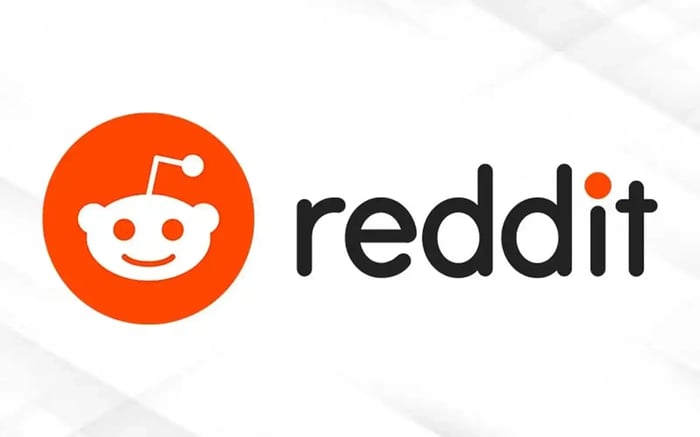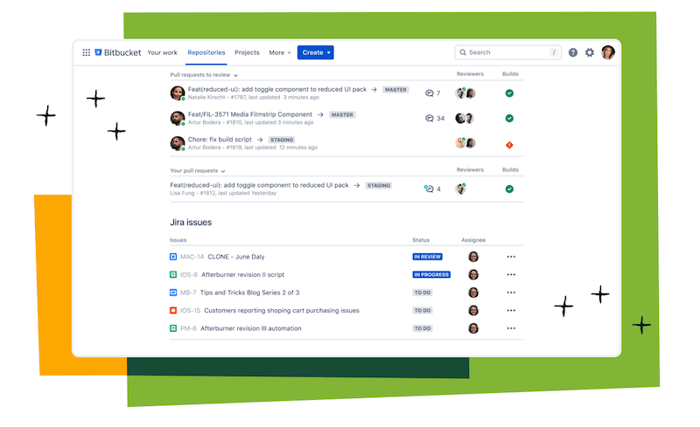Top 10 Django Apps Examples

Key Takeaways:
-
Rapid Development & Scalability – Django’s modular structure and reusable components allow businesses to scale their applications efficiently as user demand grows.
-
Security & Reliability – Built-in security features protect against common vulnerabilities like SQL injection, cross-site scripting (XSS), and cross-site request forgery (CSRF).
-
Robust Database Management – Django’s ORM (Object-Relational Mapping) simplifies database interactions, enabling smooth data handling for large-scale applications.
-
Support for AI & Machine Learning – Companies like Spotify and YouTube leverage Django’s compatibility with Python-based AI/ML tools for personalized recommendations.
-
Content Management & High Traffic Handling – News platforms like The Washington Post and The Guardian rely on Django for efficient content delivery and high-performance web applications.
-
Seamless API Integration – Django REST framework (DRF) enables companies like Venmo and Google to build powerful, scalable APIs for fintech and search-related applications.
-
Flexibility for Different Industries – Django is used across various sectors, including social media (Instagram, Pinterest), fintech (Venmo, PayPal), cloud storage (Dropbox), and science/space research (NASA).
Django is a high-level Python web framework that enables rapid development, clean and pragmatic design, and scalability. Built with efficiency in mind, Django helps developers create secure, maintainable applications while reducing repetitive coding tasks. Its robust architecture and built-in features make it a top choice for businesses of all sizes, from startups looking to launch MVPs quickly to large enterprises managing complex web platforms.
But what's really significant is that Django isn't just well-suited for start-ups, as some may assume. It also performs well during the further development of full-blown projects.
Startups benefit from Django’s speed and flexibility, allowing them to iterate rapidly and bring products to market faster. SaaS companies rely on Django for its scalability and built-in security features, ensuring smooth performance even as user demand grows. Large enterprises, including major tech giants and media companies, leverage Django to handle high-traffic loads, complex data processing, and content management at scale. Whether building an e-commerce site, fintech platform, social media network, or AI-powered application, Django’s versatility makes it an ideal choice for modern web development.
In this blog, we will take a closer look at the top 10 Django apps that have made good use of this technology, and see how it's helped them grow and evolve.
Before we get to Django apps examples, though, let's briefly explore what the Django web framework is and what makes it so many companies choose it as their platform for web development.
Defining the Django Framework
So what is Django in plain language? Django is a full-stack, open-source development framework built with Python. Notably, it is also one of the most effective environments for building Web applications. Django implements reusable code principles and is architected in a way that enables rapid development. This makes it a great fit for projects requiring fast time-to-market.
The keynote to answering the question ‘What is Django?’, lies in the fact that Django was built in Python and inherited a lot of its simplicity and flexibility. Built on top of the Python language, Django encourages fast development process, is secure, scalable and has a clean and simple design.
As of today, Django apps are extensively leveraged for projects involving AI, Machine Learning, and Big Data. Django applications include both frontend and backend.
Why Use Django for Python Projects?
So what makes Django stand out among other frameworks? According to Stackshare.io, as many as 2543 companies are using Django to write Python code. There are solid reasons for that, namely:
Accelerated Development
From a business standpoint, fast product delivery gives you a distinct competitive edge. Django has extensive code libraries and enables developers to reuse chunks of code instead of writing an entire application from scratch.
It comes with a number of in-built goodies, such as a REST framework for creating APIs, integrates with various databases, and doesn’t require any third-party extensions to operate. This will literally enable you to roll out a simple Django site in the shortest possible time - an advantage, difficult to overlook.
Highly Versatile and Scalable
Django will suit a variety of web projects, from a basic scheduling app to a complex, heavy-duty solution, such as a social media platform with a large user base. The range of Django web apps includes MVPs and prototypes, content management systems, e-commerce, e-learning and mHealth platforms, collaboration software, and online marketplaces. What if your app needs to scale to handle peak workloads? A simple Django application can be scaled fast enabling you to handle increasing amounts of traffic.
Clean Code Principles
Django helps to create clean code, which is free from repetitions, and easy to understand. This simplifies the development process and guarantees great app performance.
Large Reference Base
Django has an exhaustive set of documentation, including tutorials, reference guides, and how-tos. It also has a large developer community, so it is always possible to learn how to achieve better performance.
The community features a Django forum where developers can discuss the apps built with Django and the framework itself, mailing lists, blog posts and RSS feeds. The users can also report bugs, see what Django developers are currently working on, look for the answers to their questions in the Q&A section, and more.
Enhanced Django Project Security
Django creators place high importance on security. The framework is constantly updated to include the latest fixes, which means that even the older versions of the toolkit comply with the highest security standards. Security is one of the main reasons to use Django to code in Python.
According to a Stack Overflow survey, as muchas 14,99% of developers choose the Django framework. The reasons include accelerated development, versatility, scalability, and simple and understandable code. Security is also one of the key characteristics of a Django application. Now, let’s take a closer look at the Django web app examples of major companies.
What Companies are Using Django for Web Development?
As of today, a match of Python with Django helps organizations and businesses across industries to power their projects ranging from social media and entertainment to complex fintech platforms.
More specifically, below are some examples of companies, their websites, and apps built with Django.
1. Instagram
This Python-based photo and video-sharing social network is crazy popular, and it needs to process huge amounts of data and manage an even greater number of interactions between users every single second.
The Django framework helps Instagram deal with all of this in perfect accordance with its three core principles: keep it simple, don’t reinvent the wheel, and go with proven and solid technologies.
2. Spotify
It wouldn’t be an exaggeration to say that Spotify has revolutionized the way people listen to music, making its wide library accessible to everyone on any device. There are options to either use it for free or buy an ad-free subscription plan.
To develop the app, Spotify bet on Python for both backend services and machine learning. And in order to make the most of this programming language, they also combined it with the Django framework.
3. YouTube
There’s no need to introduce this website since it’s already become a synonym for the term “video-sharing platform”. Originally it was a PHP-based project, but the constant need to improve its performance and add new functionalities forced YT to turn to Python as well.
As new features and upgrades need to be implemented in the least time-consuming and most effortless manner possible, Django is a big help to the YouTube team of developers, allowing them to act quickly.
4. The Washington Post
Did you know that Django was initially created to run a content-driven web app for the Lawrence Journal-World newspaper publisher? And today, some of the biggest titles in the world also take advantage of it!
Django allows The Washington Post website to handle huge traffic, providing fast and efficient performance. For the same reason, the framework is also leveraged by The Guardian, the satirical newspaper The Onion, and partially by The New York Times, as well.
5. NASA
The website of the United States National Aeronautics and Space Administration (NASA) is built using Django. According to Semrush, in July 2022, the number of monthly website users has exceeded 82 million.
NASA is owned by the US government, and some of the website’s core elements require increased security and reliability. In this case, the application of Django is highly relevant. Django also enables fast loading of high-resolution images and good website performance.
6. Google
Unsurprisingly, Google uses Django and Python to power their most renowned product, Google Search. According to Internetlivestats.com, the world’s largest search engine boasts nearly 3.5 billion searches per day - this should give you an idea about just how big a Django project can get.
Google leverages a combination of Django with Python for processing large sets of data and for data analytics.
7. Venmo
PayPal uses Python and Django in its Venmo app. A mix of a payment service and a social network, Venmo is a popular solution for splitting bills and receiving payments. Notably, this Django project app is not the only fintech service using Python and the Django framework, as these technologies are also applied in lending and algorithmic trading.
8. Dropbox
Dropbox is one of the most popular cloud storage services for documents, videos, pictures, and so on. This online drive is available for various devices, allowing its users to access it anywhere, anytime.
The platform is powered primarily by Python and Django (both the server and the desktop client software), which is why its inventor Drew Houston was able to create a prototype of the service as fast as within two weeks. Dropbox devs also chose the Django framework to enable storing, synchronization and sharing options for various types of files.
9. Mozilla
Still one of the most recognizable browsers in the world, Mozilla has to handle tremendous traffic. Not all of its components are written in Python, but all the new ones are, and they also take advantage of Django.
For instance, the support site and the add-ons are built with Django. The latter benefits from this the most. Why? Because after switching from PHP to Python (and, respectively, from CakePHP to the Django framework), it became much more capable of dealing with tens, and then hundreds of millions of views per month, and even more API hits per day.
10. Pinterest
Pinterest is one of the world’s most popular image storing and sharing services. It is also a social network where people interact and share visuals on everything from outfit ideas to interiors and recipes. According to Datareportal.com, Pinterest has over433 million monthly active users.
Django ensures the platform’s scalability and enables it to process thousands of user interactions per second seamlessly and effectively.
11. Reddit
Reddit, one of the world’s most popular online discussion platforms, relies on Django to handle massive amounts of user-generated content and real-time interactions. With millions of users engaging in discussions, upvoting content, and sharing links every second, Reddit requires a scalable and efficient backend. Django’s ability to manage high traffic loads, process vast amounts of data, and integrate seamlessly with other technologies makes it a perfect fit for a platform of this scale.

12. Disqus
Disqus is a widely used commenting system that enables websites to integrate discussion forums into their content seamlessly. From blogs to news sites, Disqus helps businesses engage their audiences through threaded conversations and user-generated discussions. Django provides the security, performance, and scalability required for Disqus to process millions of comments daily while maintaining fast load times and spam protection features.

13. Bitbucket
Bitbucket, Atlassian’s Git-based repository hosting service, is a crucial tool for developers managing code collaboration. Since it hosts millions of repositories, Bitbucket needs a reliable and secure framework to support version control and continuous integration. Django enables efficient user authentication, project tracking, and seamless API integrations, ensuring smooth workflows for developers and teams worldwide.

14. Eventbrite
Eventbrite, a popular ticketing and event management platform, leverages Django to provide a scalable and secure system for event organizers and attendees. From selling tickets to managing registrations and payments, Django ensures a smooth and data-driven user experience. Its built-in security features and seamless database management help Eventbrite handle high traffic spikes, especially during major event launches.

At Netguru, we have been using Django to build health care, sales, ticket service solutions, and a plethora of other Django app examples for our clients. Battle-proven, and all-inclusive Django has been our framework of choice for a wide range of web projects.
Let’s now delve deeper into the pros and cons of Django application development. In the next section, we will look at the advantages and disadvantages of this popular toolkit.
The Pros and Cons of Django Web App Development
The table below illustrates both the strong and the weak spots of Django web development.
|
Pros |
Cons |
|
Fast and efficient due to reusable code and libraries of ready-made elements. |
Resource intensive: consumes a lot of disk space and memory. |
|
In-built admin panel is generated automatically once you start the development. |
Too much for small-scale projects: |
|
Wide variety of applications: the range of apps Django can build includes both large and small solutions. |
Learning curve: |
|
In-built SEO tools: enables you to build a website and optimize it for search engines on the go. |
ORM is always on and cannot be disabled. |
|
Supports object-relational mapping (ORM): automatically translates Python code into an appropriate query language. |
Requires explicit definitions and has no coding conventions. |
|
Security: regular security fixes ensure that Django stands up against cybersecurity threats. |
|
|
Convenient development environment: clean, simple, and easy to understand. |
When to Use Django For Your Project
In some cases, it makes perfect sense to go for other Python frameworks, such as Flaskor FastAPI. So when can you be sure that Django will suit you best? These Django project examples should set you on the right track.
Use Case 1: Large User Base and Lots of Traffic
Think Instagram, YouTube, or, better yet, Google Search. These Django project examples speak for themselves. If you’re building a solution that will maintain high performance and handle critical workloads, Django is the way to go.
Use Case 2: Advanced Customization
Social media platforms or streaming music and video services like Spotify are perfect Django web app examples. Projects that have to be personalized and tailored to individual user preferences call for the use of Django along with the Python programming language.
Use Case 3: A Marketplace or an Online Banking Service
Thinking about building a freelancing, real estate, or e-commerce marketplace, or any web service requiring secure and reliable transactions? Opt for Dango app web development. Also, anything that will accumulate vast arrays of sensitive user data calls for the use of the Django framework.
Use Case 4: Large Scale Projects in Need of Constant Updates
Another criterion for using Django is the project duration and the size of the development team. Large teams requiring standardization and long-term goals are a sure indication you should prefer Django over other frameworks. Django has straightforward design and clear structure that helps large teams maintain consistency and good development principles.
Django FAQ
1. What is Django used for?
The Django framework is used for developing large, customizable, secure, and scalable web applications, websites, and platforms.
2. Which famous apps use Django?
The list of best Django apps includes Instagram, Spotify, YouTube, Mozilla, NASA, Dropbox, and Venmo.
3. Why is Django so popular?
Simplicity, security, excellent documentation, extensive code libraries, and the support of fast-paced development make Django immensely popular among product owners and developers.
The Range of Django Applications
High-level and versatile, secure, and all-encompassing, Django is one of the top rated Python frameworks, according to Github. The Django web apps examples listed above will give you clues about what it is capable of. Although fast-paced Django development features make Django excellent for rolling out MVPs in a dynamic startup environment, the top Django examples reveal that the framework can be used for both small and big projects. A Django app can be simple, but it can also scale into a robust platform with billions of users.
Still hesitant about which of the web frameworks is best for your project, or need to estimate the cost of Django web apps? At Netguru we are always ready to share knowledge and expertise and lend you a hand.


.jpg?width=1915&height=1041&name=Netguru-Biuro-2018-4838%20(1).jpg)



